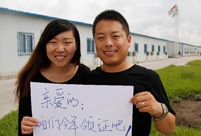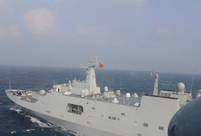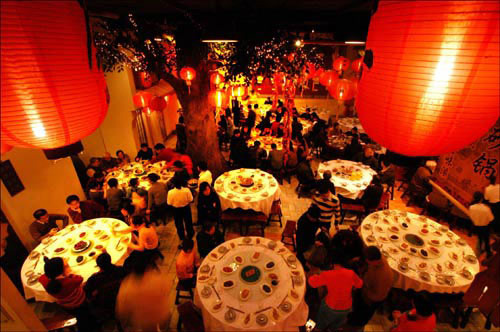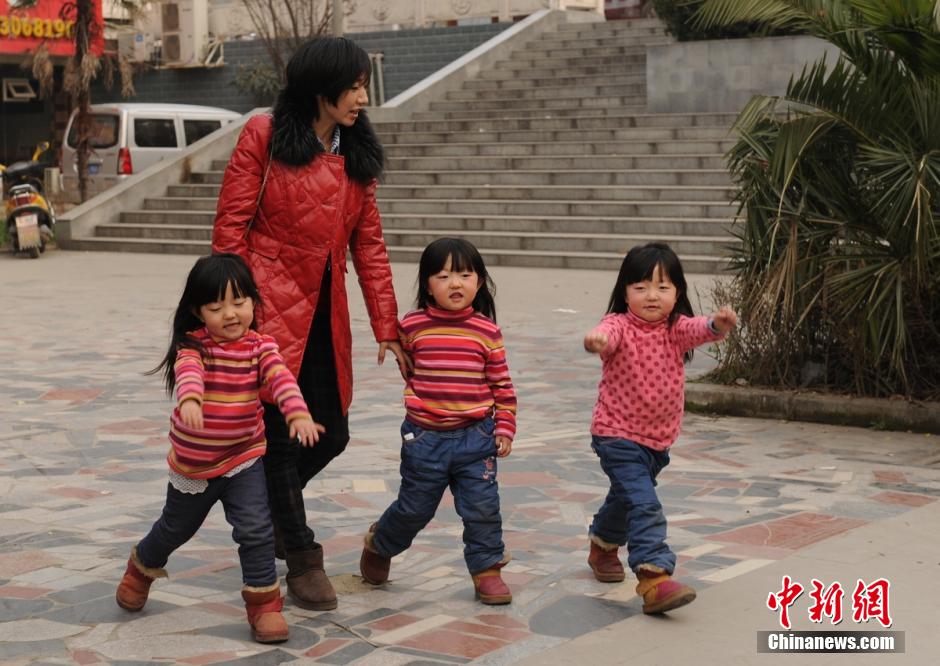 China comes in third at figure skating team event
China comes in third at figure skating team event
 China's teenager skater Yan shines at his Olympic debut
China's teenager skater Yan shines at his Olympic debut
 Taiwan-born actor stars on US TV series
Taiwan-born actor stars on US TV series
 Chinese Lunar New Year gift from abroad
Chinese Lunar New Year gift from abroad Chinese champions of Winter Olympic Games
Chinese champions of Winter Olympic Games  Zhang Yimou fined 7.48 mln for over-production
Zhang Yimou fined 7.48 mln for over-production
 Top 10 timeless female Chinese stars
Top 10 timeless female Chinese stars
 HK police disables WWII bomb in downtown
HK police disables WWII bomb in downtown
 64th Berlin International Film Festival kicks off
64th Berlin International Film Festival kicks off
China may soon be named the world's largest trader in goods
Even as China faced huge economic challenges last year, it may have knocked the US off its perch as the world's largest goods trading nation.
Whether that happened will become clear when the US publishes figures for December soon, but earlier figures pointed strongly in that direction.
Until recently China has been the world's largest exporter of goods and the second largest importer of goods.
Last year, combined exports and imports rose 7.6 percent to $4.16 trillion, the General Administration of Customs says. Exports were worth $2.21 trillion, 7.9 percent higher than the year before. Imports were worth $1.95 trillion, 7.3 percent higher than the previous year, giving China a trade surplus of $259.7 billion.
The government has been on a mission to improve the quality of the country's overseas trade and the way it is conducted. Zheng Yuesheng, a spokesman for the customs administration, says that an economic warming-up in China's big export markets has contributed to last year's strong figures.
In the first 10 months of the year the combined value of China's exports and imports exceeded that of the US by $192 billion. The pace of growth outstripped that of the US by 7 percentage points, Zheng says.
"The value of US exports and imports rose less than 1 percent in the first 11 months. On those figures, it's all but certain that China overtook the US to become the world's largest goods trader."
The value of US exports and imports in the 11 months to November was $3.59 trillion, about $570 billion less than the corresponding figure for China. The average monthly value of US trade in the 11 months was $326 billion.
The value of China's exports and imports exceeding $4 trillion last year was a milestone, Zheng says, $1 trillion having been exceeded in 2004, $2 trillion exceeded in 2007 and $3 trillion in 2011.
However, overall growth in trade last year failed to reach the government's target of 8 percent, the Ministry of Commerce says. In 2012, China's trade grew 6.2 percent; the government's target had been 10 percent.
Zhang Yiping, a researcher with China Merchants Securities Co Ltd, says the failure to meet the 8 percent target last year was "mainly owing to the unsatisfactory performance of imports".
But on the whole, "exports were not bad", Zhang says. "In emerging economies there was stronger demand for Chinese exports, while in the US and the European Union demand weakened."
Shen Danyang, a spokesman for the Ministry of Commerce, said at a news conference on Jan 16: "Basically China's foreign trade met last year's target, and the results were achieved with a lot of hard work. It was an outstanding success internationally given sluggish world demand and the uncertain recovery."
The country's export juggernaut is made up of numerous small- and medium-sized enterprises such as Ningbo Haixin Hardware Co Ltd in Zhejiang province.
Meng Yu, the company’s sales manager, says the value of its exports managed to rise last year, despite its exports to Japan falling and despite rising labor costs, increasing competition and greater difficulty in borrowing from banks.
"We tightened internal controls to cut costs and improve productivity," Meng says. "We also dropped low-end products or markets to step up industrial upgrading and improve production. We also brought in more automation to cut the use of labor."
The company, a private business set up in 1995 and which has 280 employees, sells fasteners such as bolts and nuts in the United States, Northern Europe and Southeast Asia.
"China's exports are still strongly competitive globally," Meng says. "Well-established factories give the country outstanding manufacturing ability. We are rich in resources and the cost of labor is still lower than in many other places.
"Chinese exporters have made important productivity gains in recent years, but dealing in low-end products is becoming harder."
In recent years doubts have grown about China's export competitiveness because costs, especially for labor, have risen rapidly. Some foreign invested exporters have moved their Chinese plants to Southeast Asian countries where labor is a lot cheaper.
"For private businesses, conditions are not so good for shifting domestic plants to Southeast Asian countries," Meng says. "Although the cost of labor is much lower, there is a dearth of resources, and they rely on imports. In some countries, the political and economic environment is poor, not to mention the big differences in culture and language. There can also be opposition from local competitors or industrial associations."
Shen, the commerce ministry spokesman, said that China's trade growth not only boosts the country's economic growth and employment, but also creates huge employment and investment opportunities for its trading partners. He quotes a report from the World Trade Organization as saying that China is one of the top three import sources for 107 economies of the WTO's 159 members and one of the top three export markets for 42 members.
It is important to consider the upgrading and structural improvement in China's goods trade since the 2008 global financial crisis, Shen says.
"China's trade structure has made remarkable progress on many fronts over the past five years."
Emerging markets accounted for 61.2 percent of China's total exports last year, compared with 53.8 percent in 2008, the Ministry of Commerce says. The mainland's top five trading partners were the European Union, the US, the Association of Southeast Asian Nations, Hong Kong and Japan. But combined trade with the EU, the US and Japan accounted for 33.5 percent of China's total trade last year, compared with 35.2 percent from the previous year.

 Special Coverage: Sochi Winter Olympic Games
Special Coverage: Sochi Winter Olympic Games  A day of a female high-speed train chief attendant
A day of a female high-speed train chief attendant New Year greetings from Chinese nationals in Africa
New Year greetings from Chinese nationals in Africa PLA navy conducts landing drills in South China Sea
PLA navy conducts landing drills in South China Sea  Blind date fair in Hangzhou
Blind date fair in Hangzhou  Highlights of Chinese New Year celebrations around the world
Highlights of Chinese New Year celebrations around the world  How do the Chinese spend their money during Spring Festival?
How do the Chinese spend their money during Spring Festival? 'Milk Tea' girl hosts Spring Festival gala of universities in U.S.
'Milk Tea' girl hosts Spring Festival gala of universities in U.S.  Brave mother fights cancer, enjoys Spring Festival with her triplets
Brave mother fights cancer, enjoys Spring Festival with her triplets President Xi attends opening ceremony of Sochi Winter Olympics
President Xi attends opening ceremony of Sochi Winter Olympics Highlights of opening ceremony of Sochi Winter Olympic Games
Highlights of opening ceremony of Sochi Winter Olympic Games Snowscape in Chinese New Year
Snowscape in Chinese New Year Interesting horse figures in life
Interesting horse figures in life  Top 20 most beautiful Chinese stars
Top 20 most beautiful Chinese stars  Top 10 Chinese films in 2013
Top 10 Chinese films in 2013Day|Week|Month